Redbud trees: because sometimes, Mother Nature just wants to show off. If you need me to demonstrate, check out this video I took last spring of some redbud trees in midtown Manhattan last spring.
The Manhattan Redbuds
(looking like Dr. Seuss Trees)
Cercis canadensis trees exhibiting cauliflory.
Cauliflory is a botanical term referring to plants that flower and fruit from their main stems or woody trunks rather than from new growth and shoots.
The redbud normally blooms on the leaf-less early spring branches, but these bloom clusters are typical of older, more established trees.
The Redbud tree (Cercis canadensis) is universally loved and is one of the best spring flowering trees. This native (to Eastern North America) tree is used by Native Americans in basket making because it bears a naturally red orange inner bark that is preferred for creating contrasting patterns in the weave.
Many people also call it a Judas tree – though it is not the real ‘Judas tree’ (that is similar to Cercis siliquastrum). Did you know that it is called the Judas Tree because it is the supposed tree that Judas hanged himself from when he betrayed Christ – lore says that the tree ‘blushed’ when this happened. Hmmm…
Wikipedia describes the Redbud:
It typically grows to 6-9 m (20-30 feet) tall with a 8-10 m (25-35 foot) spread. It generally has a short, often twisted trunk and spreading branches. The flowers are showy, light to dark magenta pink in color, 1.5 cm (½ inch) long, appearing in clusters from March to May, on bare stems before the leaves, sometimes on the trunk itself. The flowers are pollinated by long-tongued bees such as blueberry bees and carpenter bees. Short-tongued bees apparently cannot reach the nectaries.
In some parts of southern Appalachia, green twigs from the Eastern redbud are used as seasoning for wild game such as venison and opossum. Because of this, in these mountain areas the Eastern redbud is sometimes known as the spicewood tree.
1. Redbud leaves, 2. Seedpods on an Eastern Redbud Tree, 3. redbud tree 2, 4. Blossoms of the Eastern Redbud tree (Cercis canadensis), 5. Spring is here, 6. Redbud Rhapsody, 7. Spring Dreams, 8. Redbud (Cercis canadensis), 9. Cercis canadensis ‘Forest Pansy’
Rodney’s Favorite Redbud – Cercis canadensis ‘Merlot’ – Even Non Wine Drinkers Will Want To Plant One
This past weekend, a group of friends and I ran in a relay race across the Adirondack mountains. When you’re not running, you are spending hours in a van following the next member of your team. With all of these van hours, there are many different conversations, including relaying the storyline of Sideways to one team member who had yet to see this classic movie about friends discovering themselves in wine country.
The irony was that we may have been discovering ourselves while running in this 200-mile relay by talking about men discovering themselves. But maybe not. My running club is not the first place I think of for self-help junkies and wine drinkers. They’re more the suck it up and pass me a beer kind of friends I need.
“I am not drinking (expletive) Merlot!”
-Miles from the movie Sideways
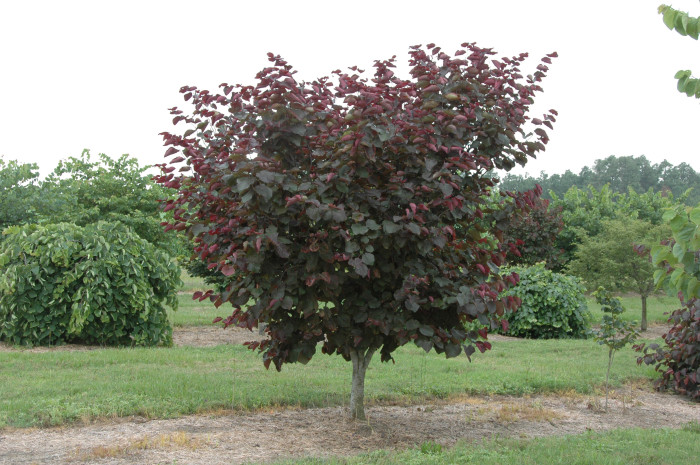
I’m back at work today feeling aware and refreshed as if I had been at a spiritual retreat. I guess if you call riding in a van with a bunch of smelly guys and running over 23 miles at various periods over 24 hours of meditation, then so be it.
As I was making my way through the gardens, I walked by one of my favorite trees, the Merlot redbud, Cercis canadensis x ‘Merlot.’ In a film noir moment, I immediately replayed the conversation from the weekend along with the mental clip of Miles stating in Sideways that he hoped his blind date would not drink merlot.
You are probably now thinking that it is a strange and ironic story or that I am a strange person and feeling the utmost sympathy for my wife because she has to put up with these kinds of streams of consciousness constantly. If you are thinking the latter, you are welcome to mail her a bottle of merlot to help her cope.
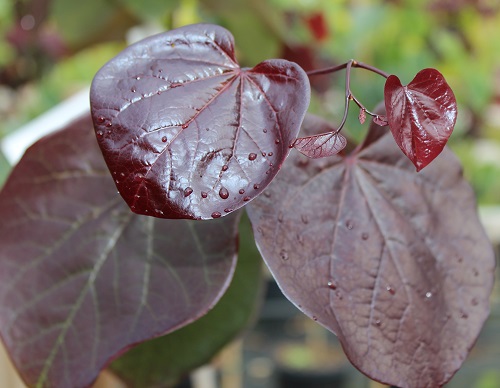
Ok, let’s put a fine point on this story.
Whether you like Merlot or not, add a Merlot redbud to give your garden a refined taste.
Why, you might ask? Because it is one of the most fantastic, dark-leaved, small flowering trees in cultivation.
The origin of Cercis canadensis ‘Merlot’
Dr. Dennis Werner from North Carolina State University crossed a dark-leaved redbud, Cercis canadensis ‘Forest Pansy’, with an ecotype from Texas and Mexico known as Cercis canadensis var. texensis. Dr. Werner selected one seedling from this lot because of its dark leaf color (from Forest Pansy) and thick, glossy leaves (from its Texas cousin).
The Merlot redbud matures at 12 to 15′ in height and width, so it will make the perfect small tree for the residential landscape. Like most redbuds, it has bright pink flowers on all parts of the stems before the leaves emerge. Redbuds are one of the few trees that even flower along the main trunk.
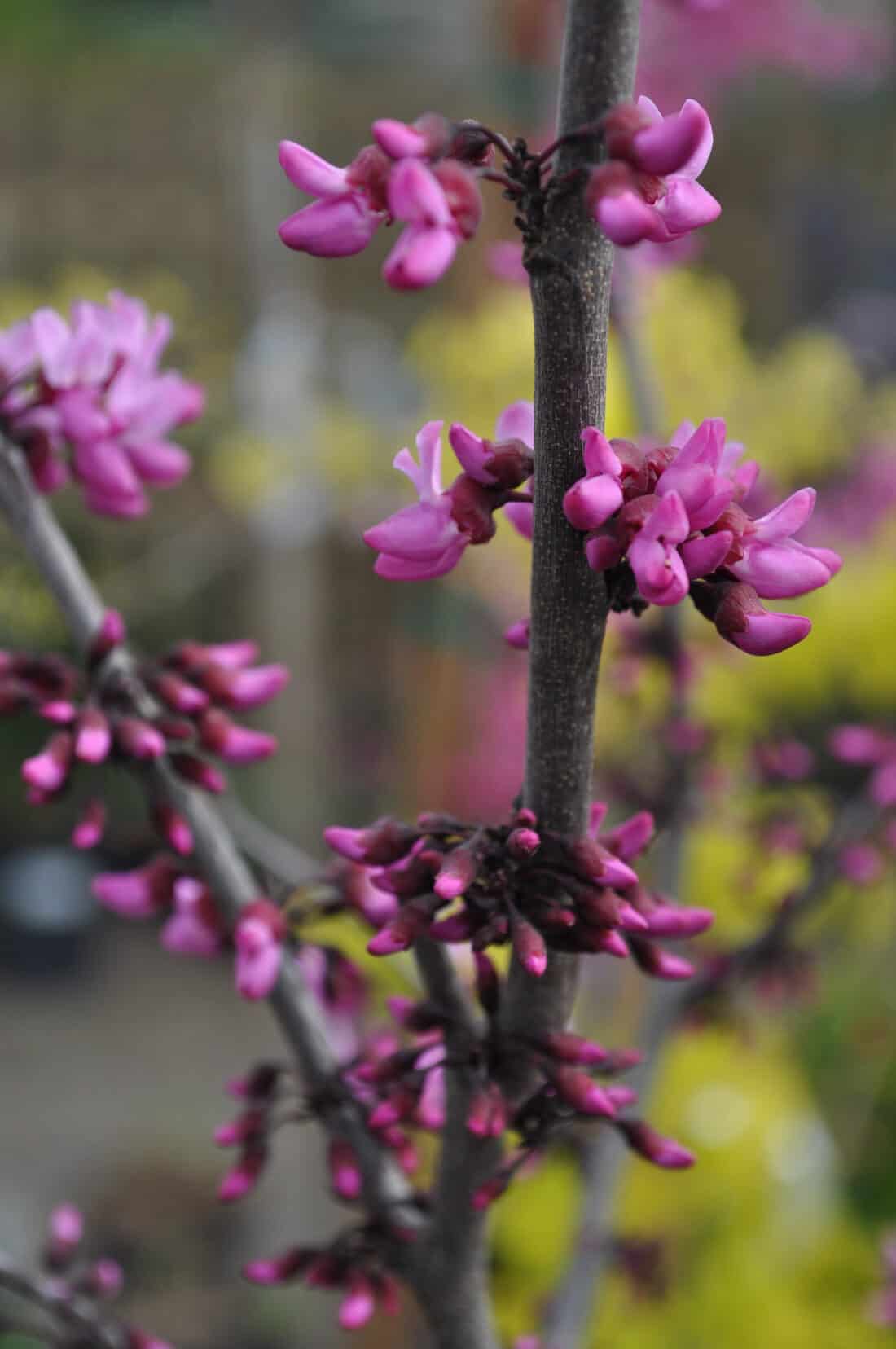
After flowering, the deep burgundy, well, I guess you could say merlot-colored leaves emerge. The foliage color is held throughout the summer until the leaves drop in the fall. These redbud trees are reportedly hardy to USDA zone 6. But, given the native parent variety, it is tolerant of zone 5 – I have a sneaking suspicion they may be a bit hardier than the literature states.
– Rodney
Planting Ideas and Inspiration for Forest Pansy:
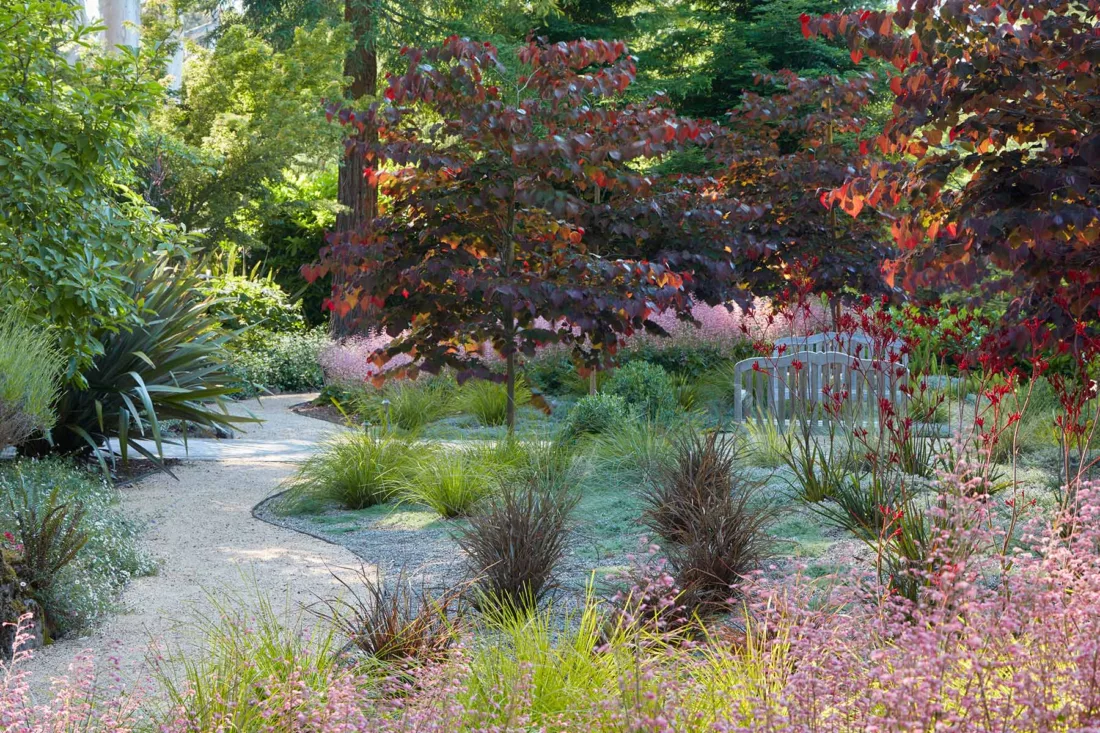
If you’re looking for high-style planting inspiration featuring lots of Cercis canadensis trees, you will find it in this garden by Chris Jacobson. Photographed by Caitlin Atkinson, this garden is in Atherton, CA. It’s inspired by the naturalistic style of Piet Oudolf but is water-wise and appropriate for the dry regional climate. Take a full tour of the garden on the GardenArt Group Website.
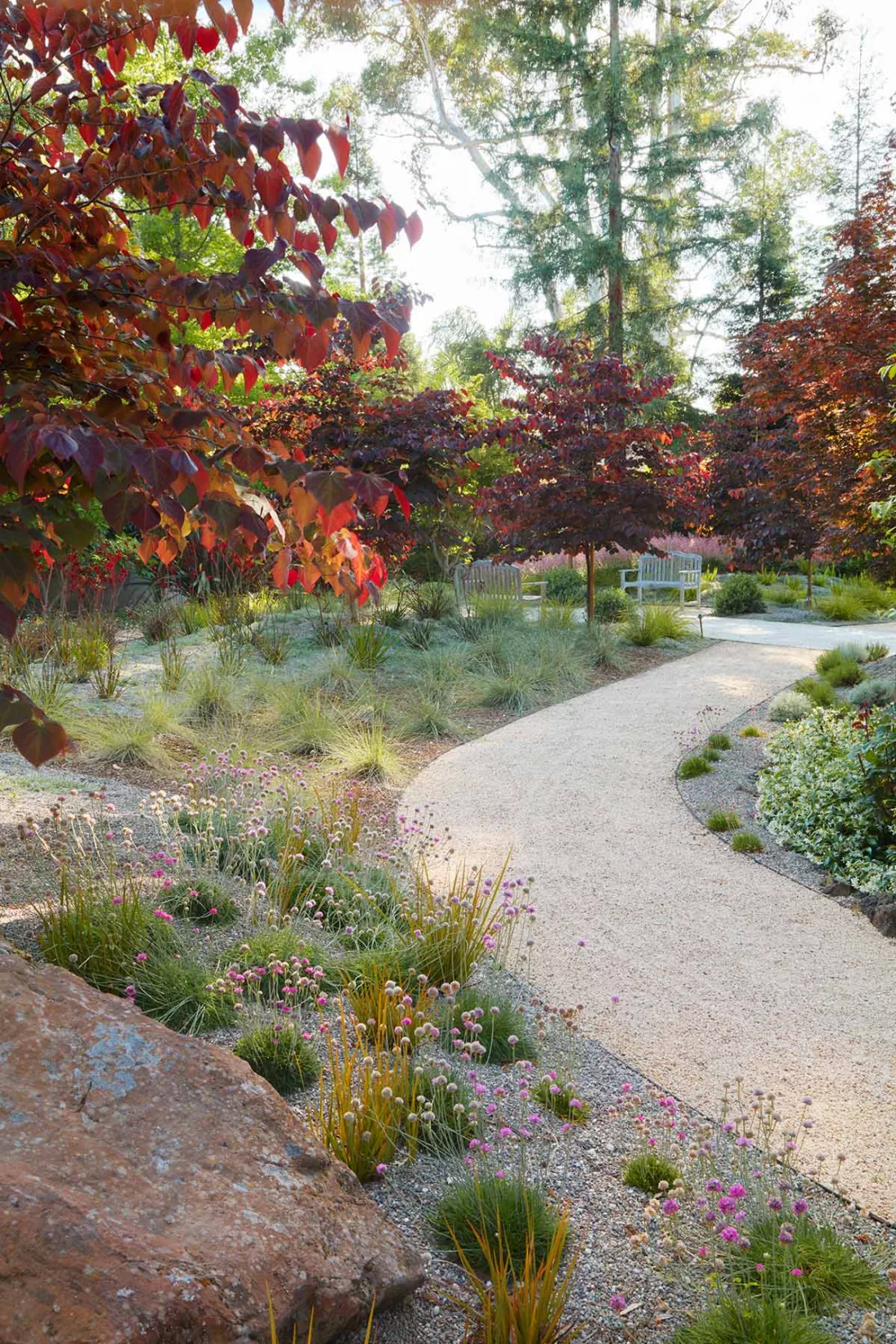
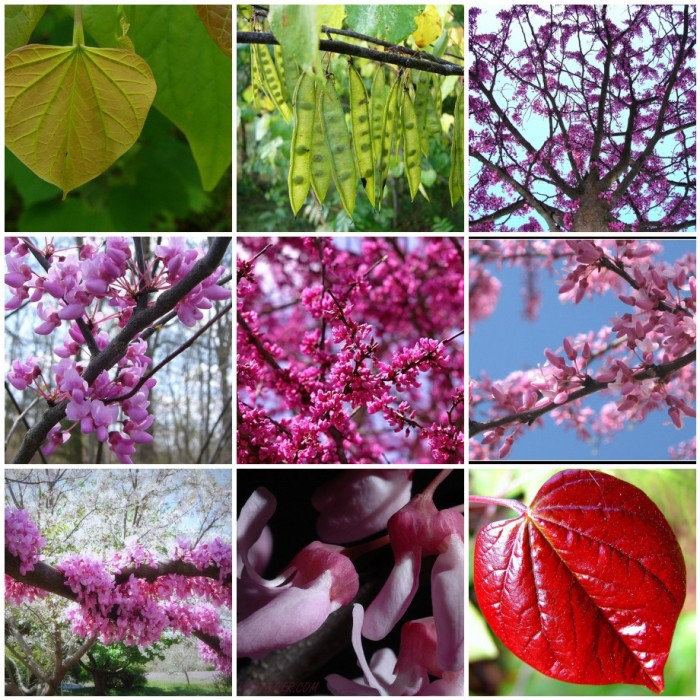
Stunning! Thanks for the info.